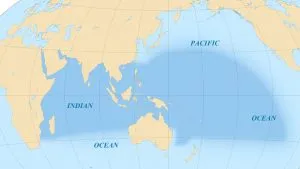

1Definitions used in this gradation system are taken from UN General Assembly Document A/63/63, 2008, Bueger, 2014b and Otto, 2020)References Bernaert, A. (1988). Bernaerts’ guide to the 1982 United Nations Convention of the Law of the Sea: including the text of the UN Convention and Final Act. Fairplay Publications. Bueger, C. (2014b). What is maritime security? Marine Policy, 53, 159-164. Bueger, C., Edmunds, T., & McCabe, R. (2020). Into the sea: capacity-building innovations and the maritime security challenge. Third World Quarterly, 41(2), 228-246. Cook, P. (2020). Comment: The emerging spectrum of maritime security, International Journal of Maritime Crime & Security (IJMCS), pp. 50-55. Çetin and Köseo?lu (2020). A study on the classification of maritime security threat topics. International Journal of Environment and Geoinformatics (IJEGEO), 7(3):365-371. DOI: 10.30897/ijegeo.742336. Keil, K. (2014). The Arctic: A new region of conflict? The case of oil and gas. Cooperation and conflict, 49(2), 162-190. Kraska, J., &Pedrozo, R. (2013). International maritime security law. MartinusNijhoff Publishers. Murphy, M. (2006). Piracy and UNCLOS: does international law help regional states combat piracy?. In Violence at Sea (pp. 167-194). Routledge. Otto, L. (2020). Introducing Maritime Security: The Sea as a Geostrategic Space. In Global Challenges in Maritime Security (pp. 1-11). Springer, Cham. Silveira, J. A. (2020). The Evolution of EU’s Maritime Security Thinking. In Developments and Advances in Defense and Security (pp. 269-280). Springer, Singapore. Stopford, M. (2009). Maritime Economics Routledge. New York, USA.The ACIA. (2004). Impacts of a Warming Climate: Arctic Climate Impact Assessment. Cambridge: Cambridge University Press. UK Government (2014). The UK National Strategy for Maritime Security. UK Government, London, 2014.Retrieved 02 February 2019 fromhttps://assets.publishing.service.gov.uk/government/uploads/system/uploads/attachment_data/file/322813/20140623-40221_national-maritime-strat-Cm_8829_accessible.pdf UNCLOS (1982). United Nations Convention on the Law of the Sea https://www.un.org/Depts/los/convention_agreements/texts/unclos/unclos_e.pdf United Nations (2008). Oceans and the law of the sea. Report of the Secretary- General, UN General Assembly Document A/63/63, New York. Vreÿ, F. (2010). African maritime security: a time for good order at sea. Australian Journal of Maritime & Ocean Affairs, 2(4), 121-132.


